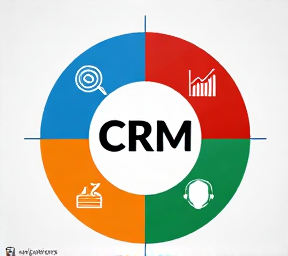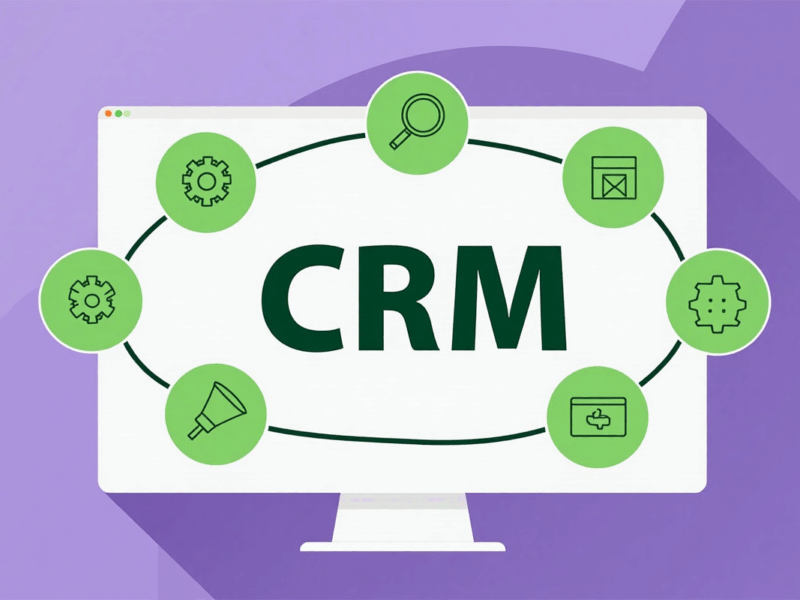Best Practices for Automating Sales Processes with CRM: Tools to Use in 2025
As businesses strive to improve efficiency and enhance customer relationships, the integration of Customer Relationship Management (CRM) software with sales automation tools has become increasingly important. In 2025, leveraging advanced technologies to automate sales processes is essential for staying competitive in the market. This article will explore the best practices for automating sales processes with CRM, the tools available, and how to implement these strategies effectively.
Understanding CRM and Sales Automation
What is CRM Software?
Customer Relationship Management (CRM) software is a technology that helps businesses manage interactions with current and potential customers. It centralizes customer data, tracks interactions, and provides insights into customer behavior. By utilizing CRM software, companies can enhance their customer service, streamline operations, and drive sales growth.
What is Sales Automation?
Sales automation refers to the use of software tools to automate repetitive tasks in the sales process. This includes lead generation, follow-up emails, appointment scheduling, and reporting. By automating these tasks, sales teams can focus on building relationships and closing deals rather than getting bogged down by administrative work.
The Importance of Integrating CRM with Sales Automation
Integrating CRM software with sales automation tools offers numerous benefits for businesses looking to improve their sales processes:
1. Enhanced Efficiency
By automating routine tasks, sales teams can save time and focus on higher-value activities such as engaging with customers and closing deals.
Time Savings
Automated follow-up emails and appointment scheduling reduce the time spent on administrative tasks, allowing sales representatives to dedicate more time to selling.
2. Improved Data Accuracy
Integrating CRM with sales automation tools ensures that data is consistently updated across platforms, reducing the risk of errors associated with manual data entry.
Real-Time Updates
Changes made in one system are reflected in the other immediately, providing a single source of truth for customer information.
3. Better Customer Insights
Combining data from both systems allows businesses to gain deeper insights into customer behavior and preferences.
Data-Driven Decisions
With access to comprehensive data analytics, businesses can make informed decisions about their sales strategies and marketing efforts.
4. Streamlined Communication
Integrating CRM with sales automation tools facilitates better communication between teams, ensuring everyone is on the same page when it comes to customer interactions.
Collaboration Tools
Features such as shared notes and task assignments help teams work together more efficiently.
Best Practices for Automating Sales Processes with CRM
To successfully automate sales processes using CRM software, consider the following best practices:
1. Define Clear Objectives
Before implementing any automation tools, it’s essential to define clear objectives for what you want to achieve. Whether it’s increasing lead conversion rates or improving response times, having specific goals will guide your efforts.
Key Questions to Consider
- What specific outcomes do you want from automation?
- How will you measure success?
- What resources do you need to achieve these goals?
2. Choose the Right Tools
Selecting the right CRM and sales automation tools is crucial for successful integration. Look for solutions that offer seamless integration capabilities and align with your business needs.
Popular CRM and Sales Automation Tools
- Salesforce: A leading CRM platform known for its extensive features and customization options.
- HubSpot: Offers an all-in-one solution that combines CRM and marketing automation.
- Pipedrive: Focuses on sales pipeline management and offers robust automation features.
- Zoho CRM: Provides a comprehensive suite of tools for managing customer relationships and automating sales processes.
3. Map Out Your Sales Process
Understanding your current sales process is vital for effective automation. Map out each stage of the process to identify areas where automation can enhance efficiency.
Stages of the Sales Process
- Lead Generation: How do you attract potential customers?
- Lead Qualification: How do you determine which leads are worth pursuing?
- Follow-Up: What steps do you take to engage leads after initial contact?
- Closing: How do you finalize deals with customers?
4. Automate Lead Scoring
Integrate lead scoring mechanisms within your CRM system to prioritize leads based on their engagement level and likelihood to convert.
Effective Lead Scoring Strategies
- Behavioral Scoring: Assign points based on actions taken by leads (e.g., email opens, website visits).
- Demographic Scoring: Use demographic information to tailor marketing messages.
- Engagement Metrics: Monitor engagement metrics to adjust lead scores dynamically.
5. Create Personalized Campaigns
Utilize insights gained from integrated data to create personalized marketing campaigns that resonate with your audience.
Steps for Personalizing Campaigns
- Segment Your Audience: Use data from both systems to create targeted segments.
- Tailor Content: Develop content that speaks directly to each segment’s needs and preferences.
- Monitor Performance: Track campaign performance metrics to refine future efforts.
6. Train Your Team
Ensure that your team is well-trained in using both CRM and sales automation tools effectively. Provide ongoing training sessions to keep everyone updated on best practices and new features.
Training Topics to Cover
- System Navigation
- Data Entry Best Practices
- Campaign Creation and Management
- Reporting and Analytics Interpretation
7. Monitor Performance Metrics
After implementing the integration of CRM with sales automation tools, continuously monitor performance metrics related to sales outcomes.
Key Metrics to Track
- Conversion Rates: Measure how many leads convert into customers.
- Engagement Rates: Track how engaged your audience is with your campaigns.
- ROI Analysis: Evaluate the return on investment for your integrated efforts.
Tools for Automating Sales Processes in 2025
As we look ahead to 2025, several innovative tools are set to redefine how businesses automate their sales processes:
1. Salesforce Einstein
Salesforce Einstein is an AI-powered feature within Salesforce that provides advanced analytics and predictive insights. It helps businesses understand customer behavior better and make data-driven decisions.
Key Features:
- Predictive Lead Scoring
- Automated Insights
- Intelligent Recommendations
2. HubSpot Sales Hub
HubSpot Sales Hub combines CRM capabilities with powerful sales automation features. It offers email tracking, meeting scheduling, and pipeline management all in one platform.
Key Features:
- Email Sequences
- Meeting Scheduling
- Pipeline Management Tools
3. Pipedrive Automation Features
Pipedrive focuses on visual pipeline management while offering robust automation capabilities that help streamline repetitive tasks in the sales process.
Key Features:
- Visual Sales Pipeline
- Workflow Automation
- Activity Reminders
4. Zoho CRM’s AI Capabilities
Zoho CRM incorporates AI-driven features that enhance lead management through intelligent insights and automated workflows tailored specifically for small businesses.
Key Features:
- AI-Powered Lead Scoring
- Automated Task Management
- Advanced Analytics Dashboard
Conclusion
Automating sales processes using CRM software is no longer a luxury; it’s a necessity for businesses looking to thrive in today’s competitive landscape. By integrating these systems effectively, organizations can enhance efficiency, improve customer insights, streamline communication, and ultimately drive revenue growth.Following best practices such as defining clear objectives, choosing compatible tools, mapping out your sales process, automating lead scoring, creating personalized campaigns, training your team, and monitoring performance metrics will ensure successful implementation of this powerful combination.As technology continues to evolve in 2025, staying informed about emerging trends will help businesses leverage these integrations effectively for long-term success in managing customer relationships while boosting their bottom line.For additional insights on optimizing your business processes through technology integration, check out this resource.


